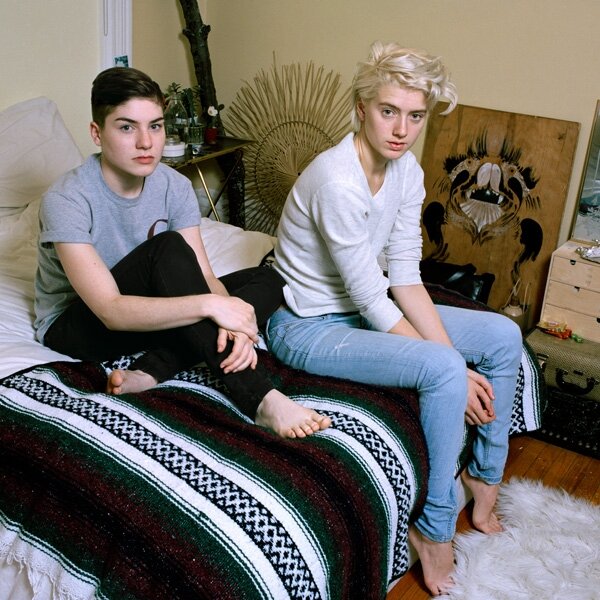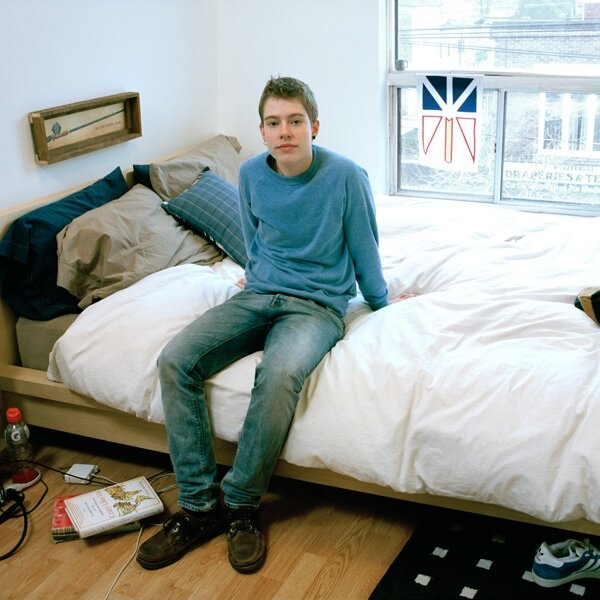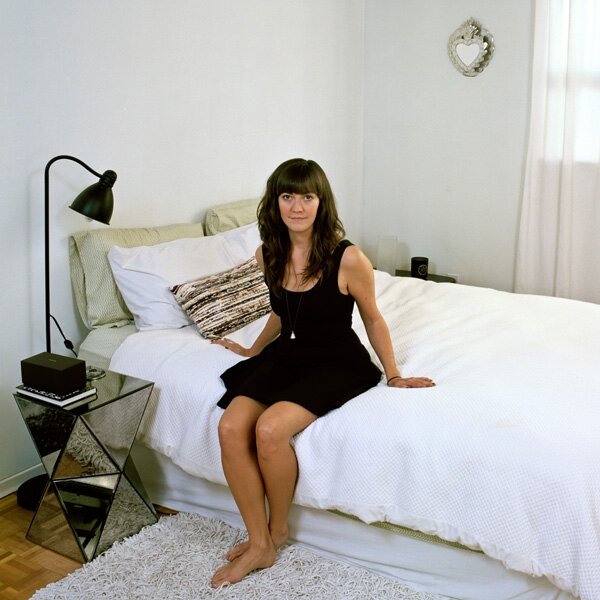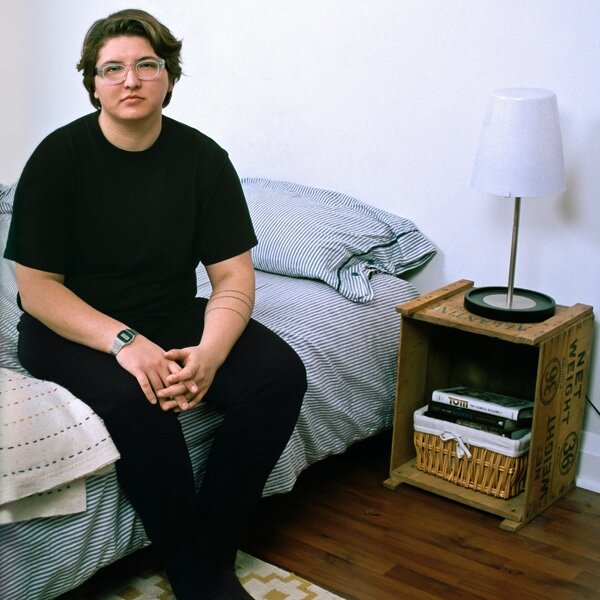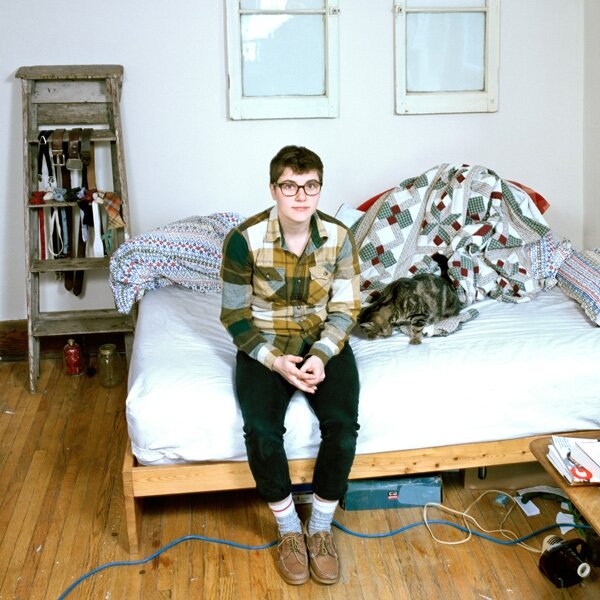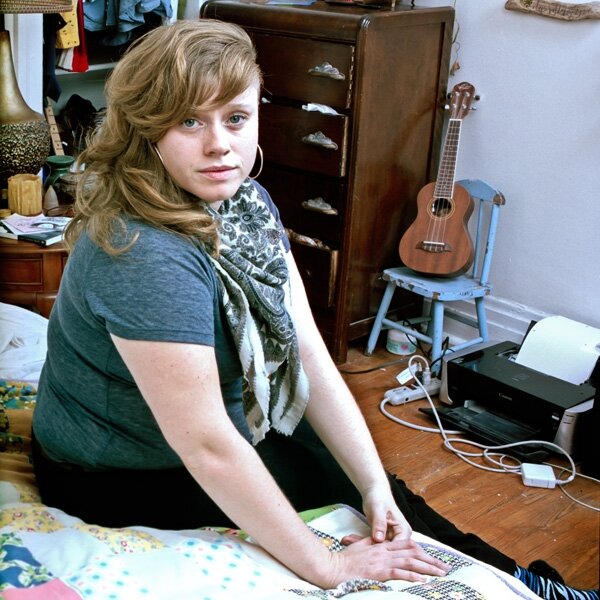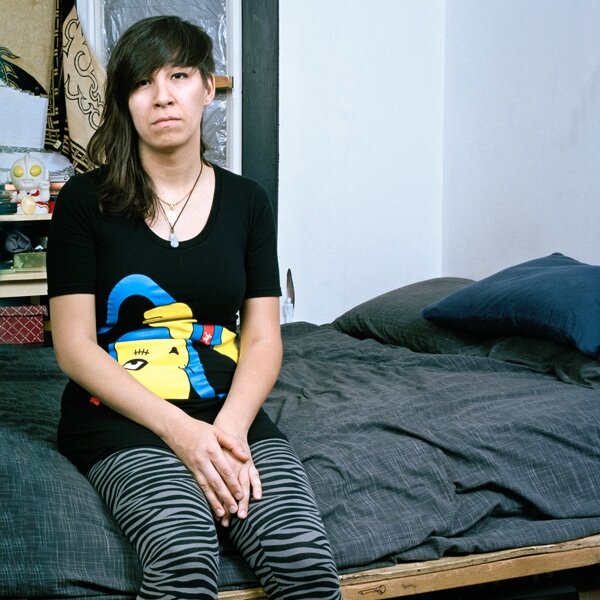Lesbian Bedrooms
Lesbian Bedrooms II
When I began to photograph lesbians in their bedrooms, my interest was fairly uncomplicated. I was concerned with exposing the “lesbian bedroom” as nothing more than a bedroom of a lesbian. I wanted to “normalize” the intimacy that passed between lesbians and look at the fullness of that life through a private window into a mundane scene. I made Lesbian Bedrooms (I).
Then I transitioned. I no longer had the visual signifiers of lesbianism. My baby face hardened, my shoulders broadened, and my voice deepened. My lesbian identity became an emotional one, a political one, one I had to explain with words instead of relying on my faux-hawk and baggy jeans. The idea of what a lesbian in a bedroom looked like was a lot more complicated than I had thought, and I was pulled to revisit the series. I wanted to look beyond my own transmasculine perspective to see other lesbian-identified people existing in the margins of visibility — who feel partially or wholly translucent. Lesbian invisibility became the new cornerstone of the project.
A traditional notion of lesbian identity is so rooted in this idea of “women-born-women-loving-women”, and for me that became a problem. For so many of us, that is a problem. My lesbian identity is about a personal history of womanhood, a greater history of feminism, and of celebrating and identifying with women. My lesbian identity is not so much a sexual orientation, but a political one. It’s about what I stand for, and who I stand with.
Femme cis women are consistantly denied their lesbian agency. Trans women are ridiculed and rejected from lesbain spaces. Trans men are expected to surrender their lesbian histories in exchange for their self-actualized futures.
With Lesbian Bedrooms II, I wanted to shake the hegemonic definition of lesbianism to see what would fall out. What happens when viewers are presented with images of people who are not immediately recognizable as lesbians, but are defined as such by the body of work? What happens if you don’t look like what you say you are? Is lesbianism a transmutable identity?
These images show an incredibly narrow slice of the lesbian population. In no way do they illustrate or define the spectrum of unseen lesbians — they merely scratch the surface of what it means to be a lesbian today.
2012
Medium format, c-prints
Press
Asexual Erotics, Ela Przybylo, 2019
Xtra! Magazine, 2013
No More Potlucks, 2012
Exhibitions
That’s So Gay, group show, 2012
Maximum Exposure, group show, 2012

